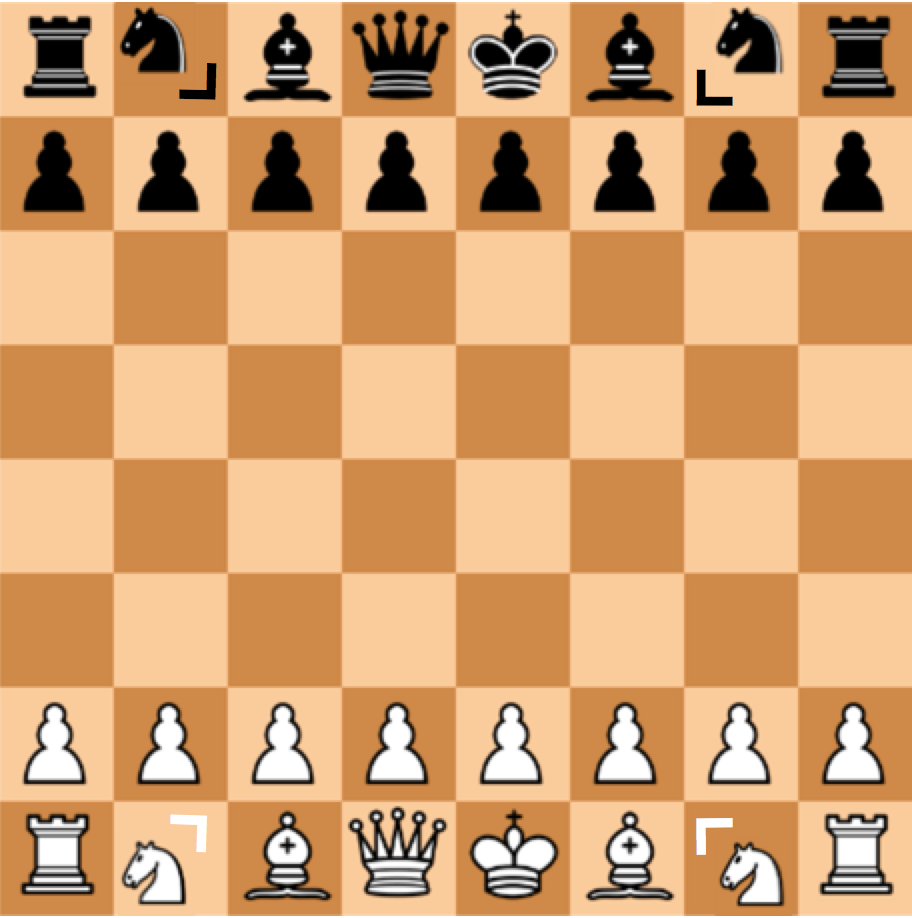Lancers Chess
This variant introduces a new chess piece: "Lancers," instead of knights. A sub-variant idea is mentioned in the Notes section to include one knight and one lancer. Its value is currently a bit ambiguous, as this author believes a piece like this has unique advantages and disadvantages. While knights thrive in the center of the board, a lancer does very well to be planted along the edge. This provides the lancer with many squares with which to be remain mobile. We will assume the value would be in-between a bishop and a rook. A single lancer and its king can force a checkmate against a lone king. Doing so requires several moves but it can still be done under the "50 move limit" regarding draws.
Pieces
In these diagrams I shrunk a knight and used an arrow to denote the direction it faces. A simple arrow would work well in computer versions, but in person, the players can use the knights and face them accordingly (being mindful that direction matters).
Rules

All orthodox rules remain in place, except that knights are replaced with lancers. A lancer begins the game facing diagonally inward, and it can "jump" to a square in the direction that it faces (up to 8 directions - all the way across the board in some cases). It can capture the first enemy piece or pawn in that direction, but it cannot jump to - or capture on - any square beyond that first enemy piece/pawn. After the movement (during the same turn) the player may immediately turn the lancer in any other direction (or leave it facing the direction it just moved).
Notes
Notation for a lancer's move is with the letter L and the square it lands on, followed by T if it turns, followed by the direction as displayed on a compass (always from the perspective of White. For example, in the starting position above, the four lancers begin the game facing the following directions):
White lancer on the Queen's side - NE (North East)
White lancer on the King's side - NW (North West)
Black lancer on the Queen's side - SE (South East)
Black lancer on the King's side - SW (South West)
Here is an example for the notation when a lancer moves, then turns. See below:
If it's White's turn, a great move would be La1TNE:
Now the Black queen is pinned by the White lancer, and the Black queen can only take the pawn (Black cannot win). If the player chooses not to turn the lancer after the movement, then he/she does not need to notate "T" or the direction. Logically as seen in this example, a player would hardly ever move a lancer to the corner and choose not to turn it (except maybe in a losing position as a forced stalemate attempt)
In Lancers Chess, one may promote a pawn to a lancer if desired, and then he/she may turn that lancer immediately after promotion.
As an alternative to this version of Lancers Chess, a sub-variant is Single Lancer chess, in which only the Queen's side has a lancer, while the King side has a traditional knight.
Promoting a pawn to a knight is illegal in Lancers Chess but is legal in Single Lancer chess.
(graphics created in the Tools section of the website musketeerchess.net)
 This 'user submitted' page is a collaboration between the posting user and the Chess Variant Pages. Registered contributors to the Chess Variant Pages have the ability to post their own works, subject to review and editing by the Chess Variant Pages Editorial Staff.
This 'user submitted' page is a collaboration between the posting user and the Chess Variant Pages. Registered contributors to the Chess Variant Pages have the ability to post their own works, subject to review and editing by the Chess Variant Pages Editorial Staff.
By JT K.
Web page created: 2017-09-03. Web page last updated: 2017-09-03